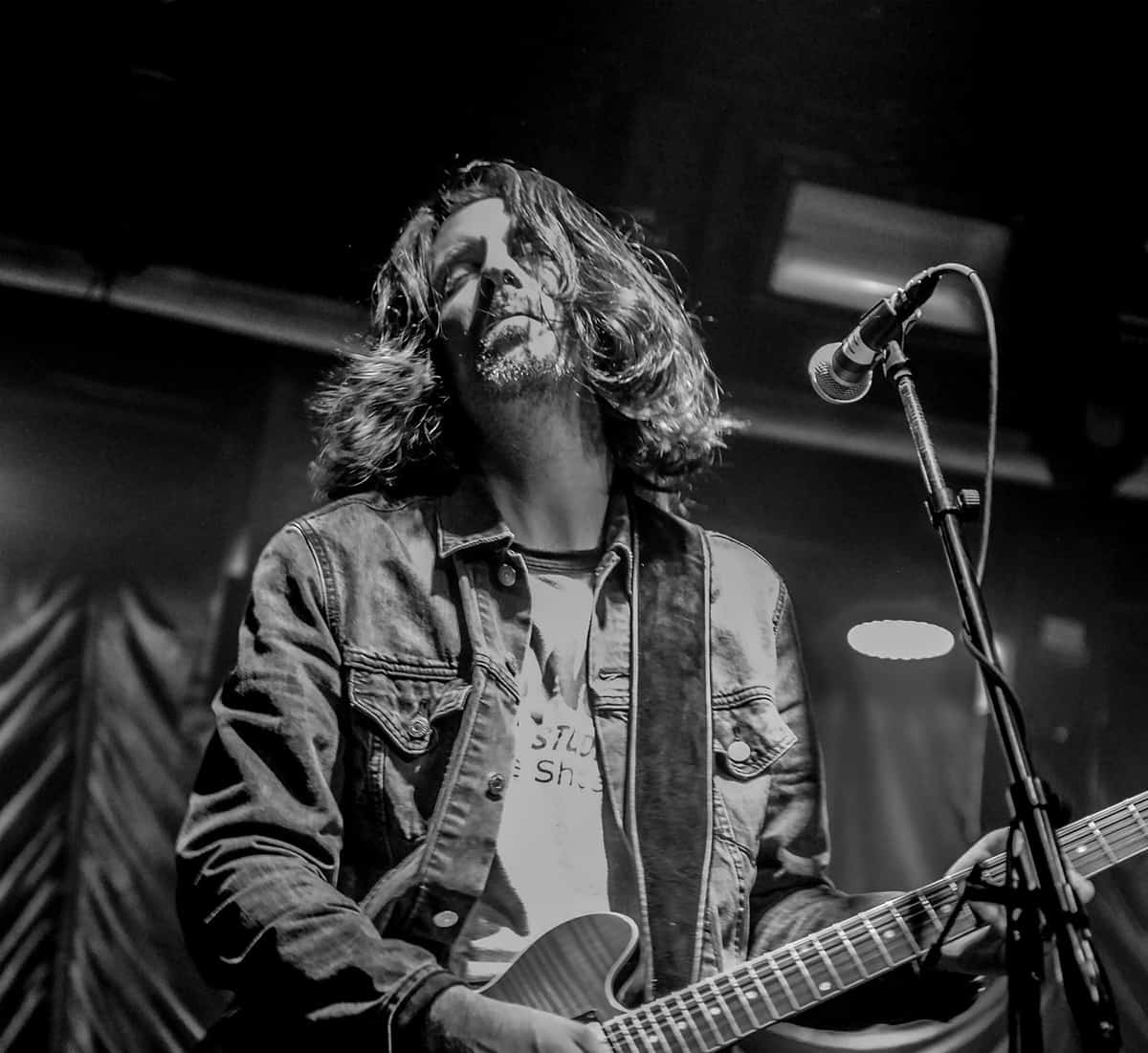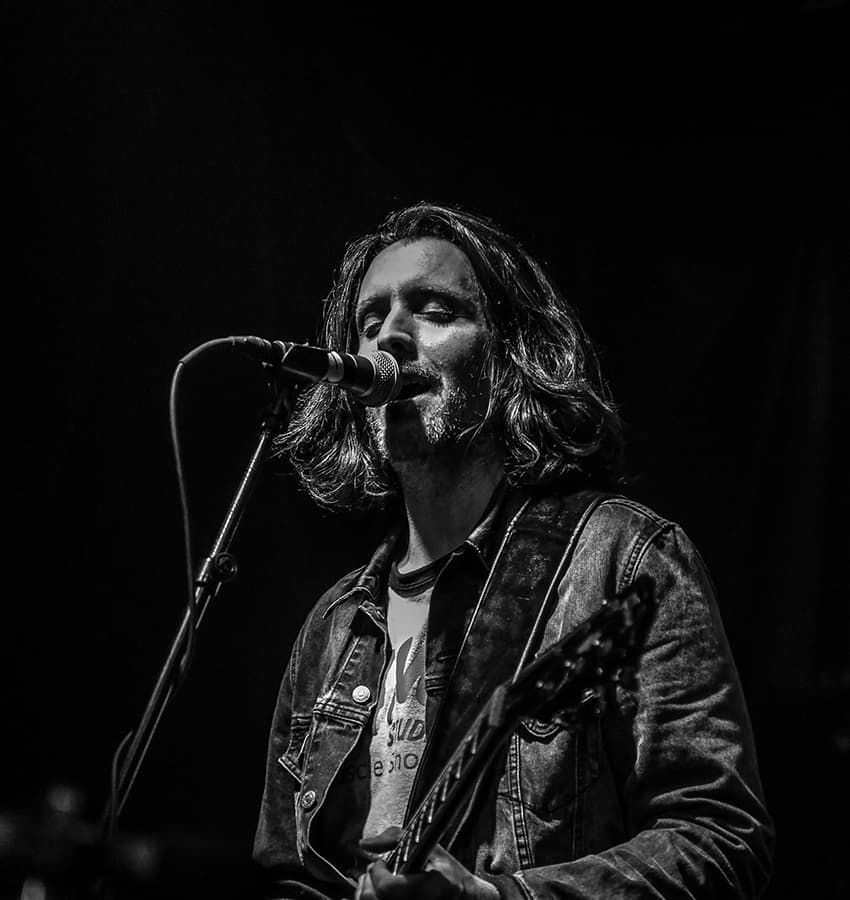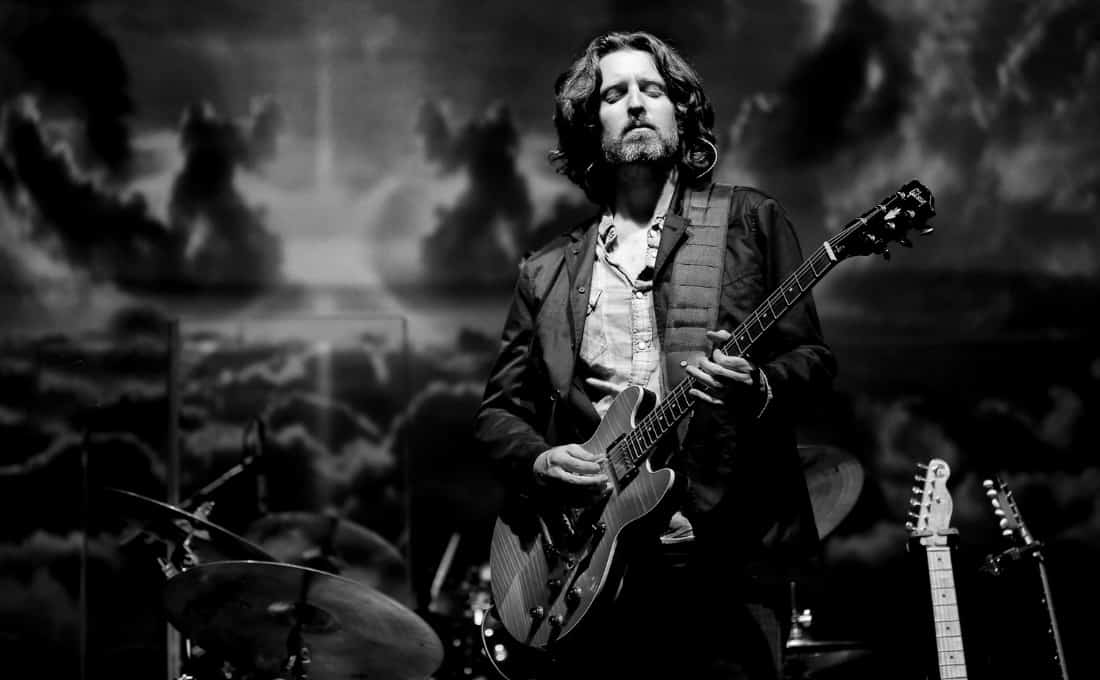Scott Sharrard is a singer-songwriter and guitarist. He is perhaps best known as the former lead guitarist and musical director of The Gregg Allman Band, but his journey began long before that.
Sharrard grew up in a musical household in Dearborn, Michigan. His father, also a musician, encouraged Scott from an early age by frequently taking him out to see live music. By day Sharrard studied music in high school; by night he got to see and eventually play with legendary performers including Stokes, Willie Higgins, Clyde Stubblefield, Buddy Miles, Luther Allison, and Hubert Sumlin.
In the mid 1990s, Sharrard moved to New York City and met Atlantic Records executive Amhet Ertegun who mentored Sharrard’s then band The Chesterfields. Soon Sharrard was working with legendary drummer Levon Helm and, through Helm’s daughter Amy, scored an audition with The Gregg Allman Band, with whom he played for nearly 10 years. In 2017 Sharrard and Allman co-wrote “My Only True Friend” on Allman’s last album Southern Blood, which earned a Grammy nomination.
Today, Sharrard continues to call New York City home and performs as a solo artist. I spoke with Scott in May 2019 before his gig at Bar Chord in Ditmas Park, Brooklyn.
RHSR: How do you prepare for performances?
 I try to leave all the negatives of the business behind. I make the stage a sanctuary. I think it’s important that we protect the music, and it’s important that we give the fans a total escape, especially in this age of phones and distraction. If somebody is leaving their house to see music, that’s incredible. I owe those people an experience. I have to dig as deep into my heart as possible and play as truthfully as I can and hope that it resonates. Luckily, I’ve found a small contingent of people who support that, and really that’s the best you can hope for.
I try to leave all the negatives of the business behind. I make the stage a sanctuary. I think it’s important that we protect the music, and it’s important that we give the fans a total escape, especially in this age of phones and distraction. If somebody is leaving their house to see music, that’s incredible. I owe those people an experience. I have to dig as deep into my heart as possible and play as truthfully as I can and hope that it resonates. Luckily, I’ve found a small contingent of people who support that, and really that’s the best you can hope for.
RHSR: What does it take to reach people in this age of digital distraction?
I ask bars to turn off the TV, which pisses some people off, and I play really loud! (Laughs) But even if only half of the people are there to listen to music, the ones who are there appreciate it.
RHSR: What changes have you seen in the music industry since you first got involved?
The industry has a well-worn history of dysfunctionality and insanity when it comes to uniting. It’s pretty consistently been a series of islands that don’t support each other.
Another problem is musicians and companies that have success and create islands where you can’t foster new talent. Take Beyonce or Madonna. The first thing they do when they go multi-platinum is to leave their label. When they do that, they ruin the chance that somebody’s going to sign the next Miles Davis.
[pullquote]Eventually the music is going to be institutionalized as an American art form. [/pullquote]If your goal is to be the Eagles or Michael Jackson, you should stop right now. Look, there’s no money left in selling records. Who cares? It’s all the live show, merch, and community.
The best we can do is play the repertoire, like Yo Yo Ma. People want to hear him play Bach cello suites; that’s what’s really going to sell tickets.
RHSR: Making a living playing music has always been tough, but it seems harder than ever today. How do you do it?
Education. I know the best jazz and classical players in the city. They are educators half to 75% of the year. They do not receive any of their income from record sales. I know a lot of musicians who seem successful, but I know they are running from one record deal to another, they’re in deep debt. Everyone’s scrambling to support themselves.
Leonard Bernstein was an incredible artist, but he was not Mozart. He was not going to rise to that level. Bach, Debussy, Sati never saw success in their lifetime or made any money playing shows. They were all teachers.
RHSR: What’s the future of American music?
The writing’s already on the wall. What sells? Tribute bands. Everywhere I play. Even when I was playing with Greg Allman in the biggest venues, half the time they were booked for tribute bands, which sell well at $40 to $60 a ticket. I’ve noticed that the whole industry, Live Nation and AG, have all moved this direction.
There are artists like Chris Stapleton or Jason Isbell who are finding success, but their songs are not being disseminated the way a Bob Dylan song would have been back in the day. They’re not making their way into the public consciousness of a culture. They exist in a subgenre of humanity, which is not their fault. They’re making great art, but the culture is not geared towards that.
Eventually the music is going to be institutionalized as an American art form. I’d put rock, blues, soul, country, etc., all under one umbrella: American roots music. That needs a home, and my plan is to be at the forefront of that.
Leonard Bernstein did it for classical music and Wynton Marsalis did it for jazz because if it’s not institutionalized, it will not be saved.
If Jimi Hendrix were 22 years old today, he’d be working at Google, he would not be playing a guitar. And if he were playing music, it’d be with a laptop.
How do you balance doing cover songs with original material?
The best example I can give is Leonard Bernstein’s “Young People’s Concerts” on Holst’s The Planets, which you can watch on YouTube. He does an incredible presentation on Holst’s work with a full orchestra, and at the end he incorporates one of his original improvisations at the end with Pluto. That’s the best beacon of hope in terms of disseminating information and be creative with it.
What can you tell us about working with Gregg Allman?
I auditioned in the summer of 2008 and sat in with the Allman Brothers. I met Derek Trucks and Warren Zanes and was a bit nervous, but they were cool. When I met Gregg, we just hit it off immediately. He reminded me so much of the old guys who mentored me as a kid. We spoke the same musical language. When we went out on the road together, he started to confide in me on the side. We had a personal connection that was tethered by being fans of music; we bonded and listened to music all night on the tour bus.
After about four years, he told me that he wanted me to be the music director of the band, to cover one of my songs, and to write new songs together. He recorded my song “Love Vicariously” twice, and it was nominated for a Grammy. We got really deep creatively and personally. It was really a collaborative experience, and I can’t say enough good things about him.
Do you have any particular future goals?
 We have to protect roots music the way they’ve done in New Orleans. There are so many people who want to protect and learn from it in the same way people used to want to learn classical music. Now they want their kids to learn to play like Jimmy Page.
We have to protect roots music the way they’ve done in New Orleans. There are so many people who want to protect and learn from it in the same way people used to want to learn classical music. Now they want their kids to learn to play like Jimmy Page.
One of my ongoing projects is turning concert series and tours of American Roots music into educational experiences and eventually into a brick-and-mortar educational facility.
I’ve got an educational video series I’ve done for My Music Master Class, Guitar Gate, and True Fire, which is probably the biggest online educational platform that exists. I’m filming a series for them this summer. And I do Skype lessons to students all around the world.
RHSR: Last question, if you could play with someone living or Dead, who would it be?
That’s a tough question! Living: Tom Waits. Dead: Miles Davis!
For more information on Scott, check out his website: www.scottsharrard.com.









